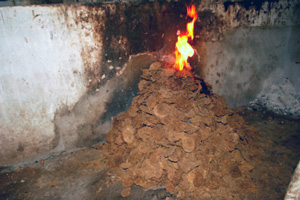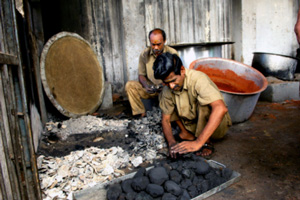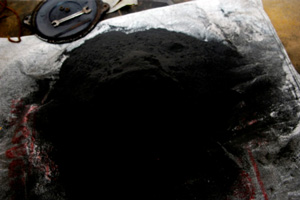Alchemy in Citta Medicine
By Kenneth Zysk
The elaborate process of preparing alchemical medicines requires special esoteric knowledge. The alchemist has to know which plant products to use and which metals fit together as an alkaline and an acid to produce a medicine that in the end will be stronger than the sum of its parts.
Before any metal or mineral can be used as a medicine, it first has to be purified and detoxified by an elaborate process. First, powerful herbs are used to “kill” the innate toxicity of the inorganic substance. The next step involves the combination of the metal with its appropriate acid or alkaline. The metal or mineral is now ready for its final transformation into an ash or “bhasman” by incineration in special furnaces made of cow-dung cakes. As a final step, a special, secret salt, called muppu, is added. The salt is particular to Citta medicine and serves as Citta’s equivalent of the “philosopher’s stone.” It gives the medicine its special strength. The calcinated metal or mineral is now suitable to be used as an internal medicinal, which would have been given to the patient through a palatable medium such as honey. Mercury, the central element in Citta’s medical alchemy is considered to be alkaline, so it is combined with the acidic sulphur in the same way that goddess Shakti is mated with god Shiva.
The esoteric substance muppu is clouded in mystery. Literally, it means the “three salts,” i.e., pooneeru, kallupu, and vediyuppu, which correspond respectively to the sun, moon, and fire. Although their exact identification is an issue of much discussion, a reliable source explains that pooneeru is a certain kind of limestone composed of globules that are found underneath Fuller’s Earth. It is collected only on a full-moon night in April, when it is said to bubble out from the limestone, and is then purified with a special herb. Kallupu is hard salt or stone salt, i.e., rock salt, which is dug up from mines under the earth, or is obtained from saline deposits under the sea, or it can be gathered from the froth of sea water, which carries the undersea salt. It is considered to be useful in consolidating mercury and other metals. Finally, Vediyuppu is potassium nitrate, which is cleaned seven times and purified with alum.
If the illness was severe, the Tranquebar patient would have been expected to undergo treatment for a considerably long period, months, even years, until the cure was complete and the bodily humours restored to their appropriate seats. The follow-up therapy would have then involved the maintenance of the healthy body and mind by the periodic use of alchemical medicines and the practice of yogic breathing exercises.
|
|
Photos by: Christian Sebastia

Collection of Calcinated Mercury

Calcinated Mercury Bhasma
|